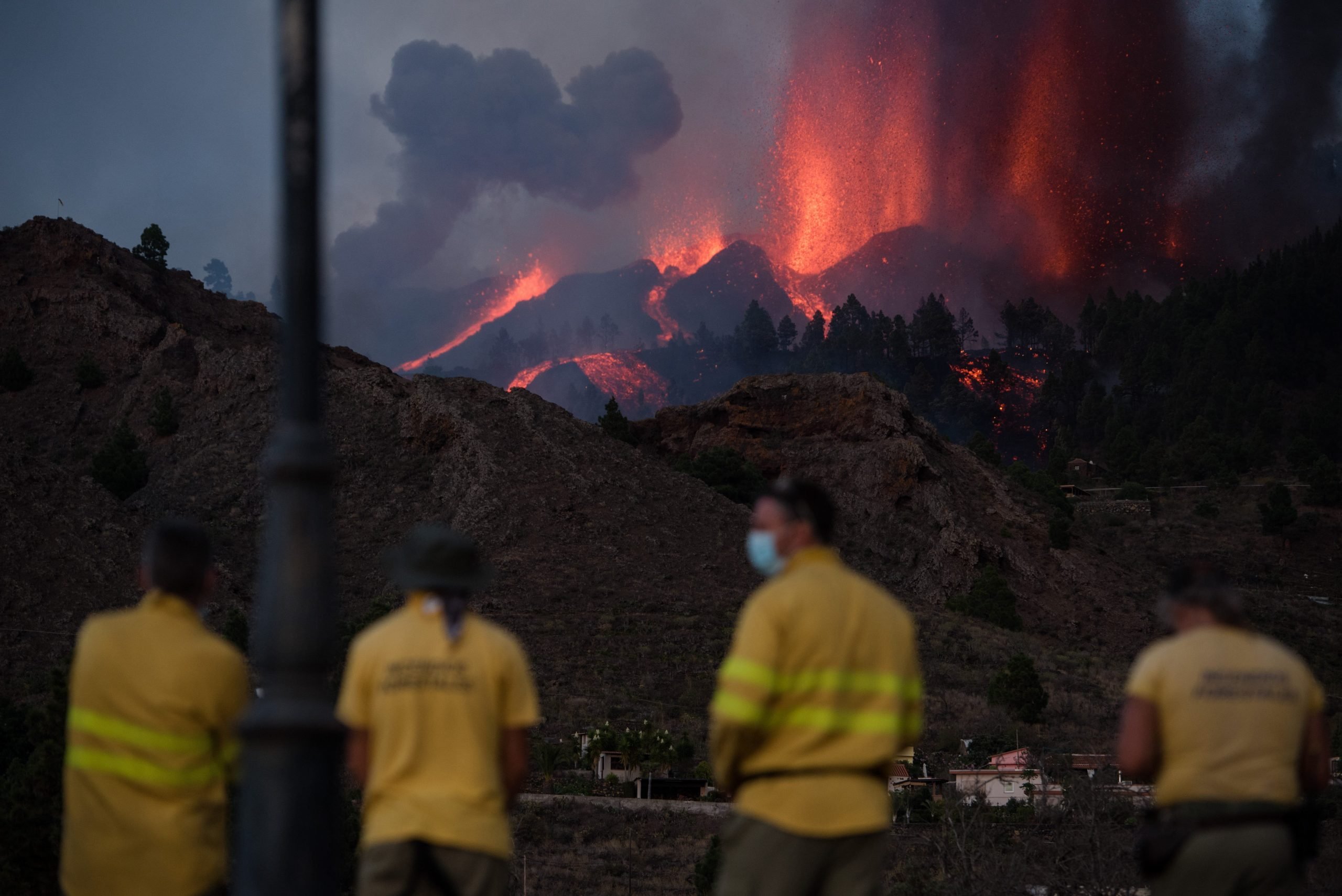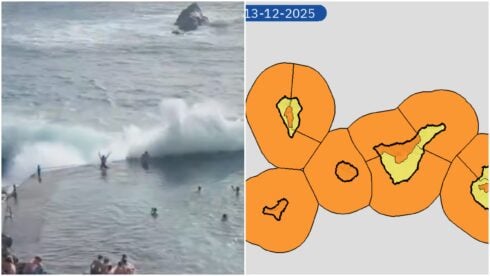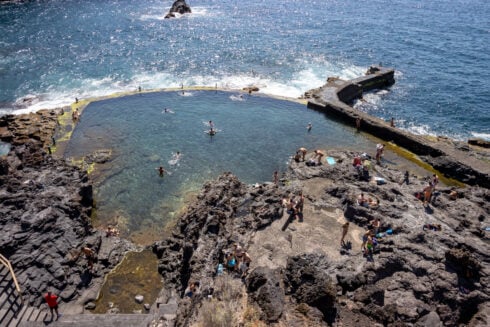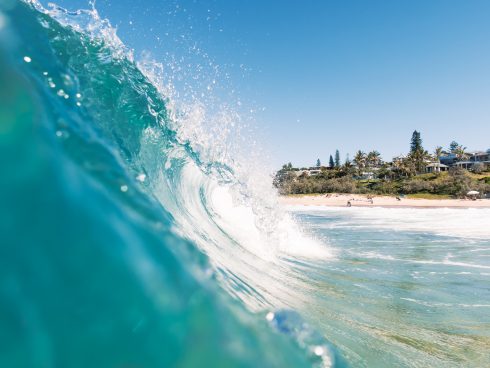A VOLCANO located in La Cumbre Vieja national park in the south of La Palma island began to erupt at around 3pm on Sunday spewing molten lava and hot ash into the sky and forcing the evacuation of thousands of residents.
The volcano had been described as ‘active but dormant’ and last erupted in October 1971 when it lasted 23 days.
Volcanic eruptions occur due to the movement of tectonic plates (large pieces of the Earth’s crust).
The movement of tectonic plates can trigger earthquakes, which create fissures (these vents can vary between a few metres wide to kilometres). When fissures appear, the magma beneath the surface can escape.
Stratovolcanoes or composite volcanoes such as this one have thick and viscous lava, this can create very explosive eruptions as gas bubbles that are trapped in the magma chamber find it difficult to escape through the rock.
They can also release lots of hot ash and rocks into the air. This is how it looked when it started:
This particular eruption can be described as a fissure eruption where multiple vents are very common.
David Calvo from Involcan said “We’ve counted eight for now, but there could be more in the coming hours while others may die down”.
Early measurements conducted in the field by Involcan recorded lava temperatures of 1075°C.
They also calculated the approximate flow speed at the middle of the lava’s trajectory as 0.7 km / h with the lava cooling and the surface solidifying.
The estimate of the amount of sulfur dioxide (SO2) emitted into the atmosphere is of 6,000 – 9,000 tons per day.
Seismic activity began on September 11 when hundreds of minor quakes were recorded. The first earthquakes occurred at a depth of 20 kilometres beneath the surface, with subsequent ones occurring at a depth of six to eight kilometres.
At least 20 tremors were recorded at just under three kilometres below the surface by Wednesday and by Sunday there was very intense seismic activity. The strongest single event was a magnitude of 4.2 on the Richter scale that occurred on Sunday at 11:16am.
Overall the INVOLCAN Canary Islands Seismic Network were able to auto detect more than 20,650 earthquakes from 01:00 on Friday 10th of September to 19:00 Canary Time on 16/09/2021
These earthquakes were pictured slowly getting closer to the surface as time continued, shown in this tweet from IGN Spain.
On Monday the president of the Canary Islands, Angel Victor Torres stated that approximately 5000 people had been evacuated however further evacuations are unlikely as the lava has begun to flow down towards the sea.
Among those evacuated were some 500 tourists and around 100 houses have been destroyed thus far.
According to a tweet released by the Delegación del Gobierno en Canarias around 300 agents from the guardia civil and the police have been deployed to aid with the eruption.
The State Security Forces have also been helping to evacuate animals in the areas affected.
The sound of the volcano erupting was described as “ like 20 fighter jets” by Jonas Perez.
INVOLCAN on Twitter: “The noise of the eruption can already be seen in the seismograms. #LaPalma #Eruption #volcanology https://t.co/2IfvsgdVHP“
Volcanic eruptions can be both harmful and beneficial to their surrounding environments – they can cause lots of damage to farmlands and towns, disrupt flights and cause issues with breathing.
However the ash and lava ( provided it’s not too thick) can break down to create extremely fertile farmland.
It is too early to predict with certainty how long this eruption will last, however based on the recent volcanic activity and historical eruptions, experts predict it could be anywhere between a few weeks to several months.
READ MORE:
- ANALYSIS: Could eruption of La Palma volcano in Spain’s Canary Islands trigger a tsunami?
- VIDEO: Homes swallowed up by molten lava in volcano eruption on La Palma in Spain’s Canary Islands
- IN PICS: Dramatic images of volcano erupting on La Palma in Spain’s Canary Islands
Click here to read more Canary Islands News from The Olive Press.








